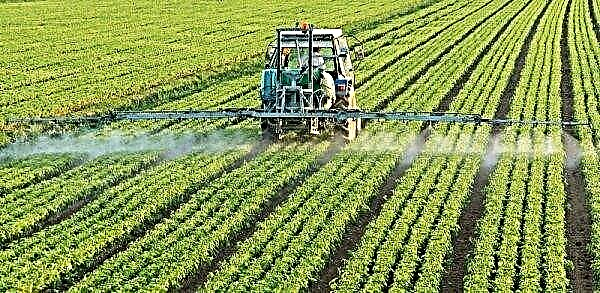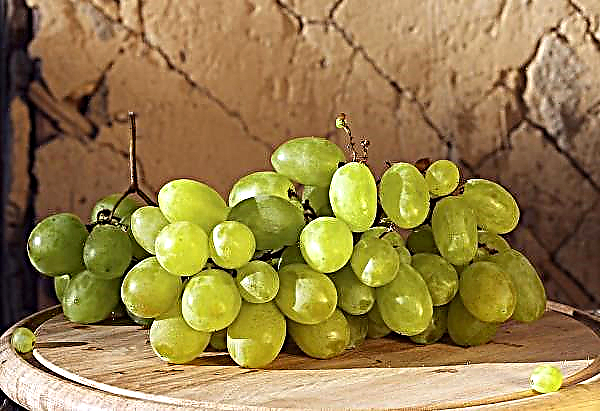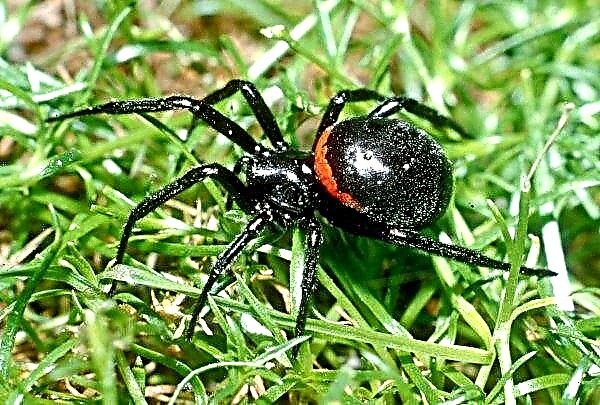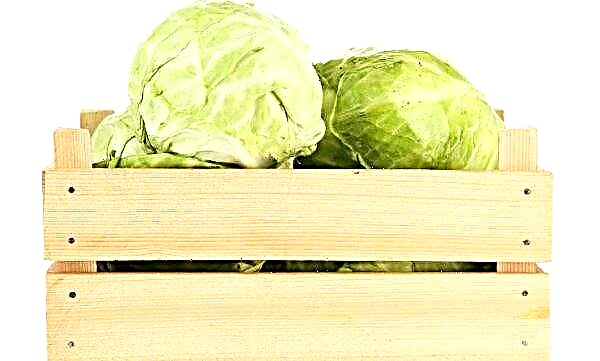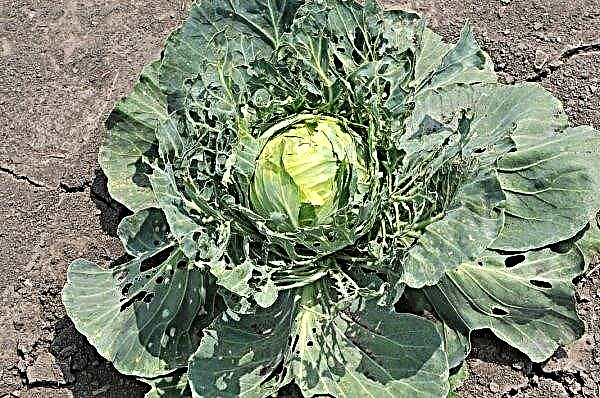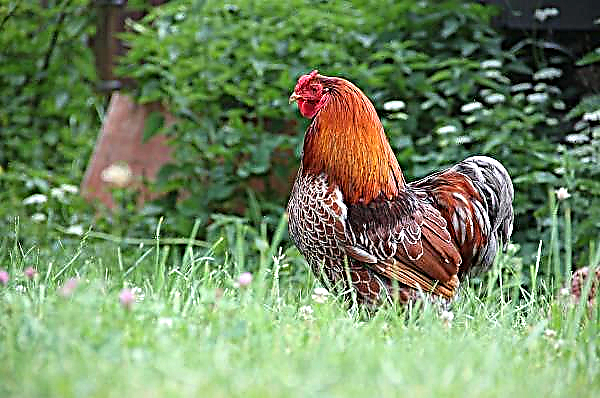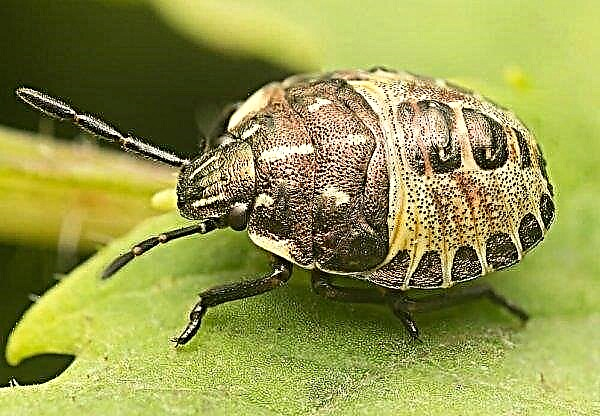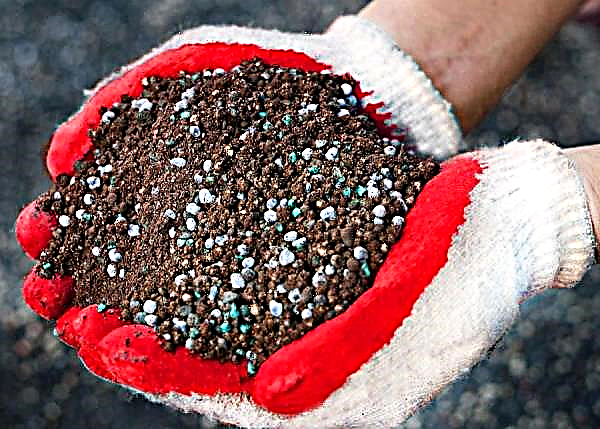An 8-frame hive raises many questions for beekeepers who have never encountered such designs before. Their construction and maintenance, indeed, are associated with certain subtleties. About the characteristics of eight-frame hives and how to work with them, read further in the article.
Description and design characteristics of 8-frame hives
The eight-frame hive is a lightweight design for the apiary, designed for 8 frames. Usually they are used for multihull hives. For operation, Dadanov frames with a socket of 300 mm and magazine extensions of 145 mm are often used. Also, you can use devices like the Rue hive. In the case of the hives of Dadan, eight-frame structures are considered minimal in the number of frames.

Pros
- Beekeepers note the following advantages of eight-frame designs:
- in the hives, the development of the bee family is more optimal;
- lightweight housing, which makes them easy to carry;
- when transporting hives take up little space.
Did you know? The largest honey collection of one bee colony in the world amounted to 420 kg of honey.
Minuses
- Despite these advantages, eight-frame hives have several significant drawbacks:
- many designs, in particular Dadan, are non-standard, so it is difficult to find spare parts for them;
- in specialized literature there is little information about the content of bees in such hives.
DIY manufacturing technology for 8-frame hives
The exact assembly technology of the eight-frame hive depends on what kind of framework the beekeeper plans to use and how many buildings he will use. Below are data on the choice of size and materials for the manufacture of the structure.

Materials and tools for manufacturing
For the manufacture of the structure, it is necessary to prepare boards. When constructing a hive for nesting frames of 300 mm, wood with a thickness of 40 mm is used. For socket frames of 230 mm, narrower boards are needed - with a thickness of 30 mm.
Of the tools you will need:
- jigsaw (for cutting boards);
- wood glue;
- nails or pins;
- hammer.
Did you know? A working bee during the pollen collection period speeds up to 25 km / h. The insect “without cargo” can fly at a speed of 65 km / h.
Drawings and Dimensions
When calculating dimensions and drawing up drawings, proceed from the type of frames used:
- Width. The calculations are carried out by multiplying the number of frames (in this case, 8) by 3.75 cm. Thus, when using Dadanov frames by 300 mm, the optimal width of the hive is 30 cm.
- Length. 1.4 cm must be added to the length of the frame. There should be a distance of 0.75 cm between the walls and side slats.
- Height. To calculate the desired height, add the length of the folds to the height of the frames.

Hive equipment inside
The hive should be equipped with the following elements:
- socket enclosures;
- half-case stand;
- store extension;
- nesting and magazine frames;
- roof;
- removable bottom;
- insulation on the roof and walls;
- wooden ceilings.
Important! To care for the apiary and pump out honey, be sure to purchase frame grips, honeycomb printing tools, hives brushes and scrapers for cleaning the hive, and other specialized equipment.
Also, the hulls should be equipped with ventilation holes, windbreaks and slats. For the separation of the uterus, partitions are needed. Two feeding troughs with a capacity of 500 ml are placed inside.

Bee keeping technology in 8-frame hives
In the beekeeping environment, eight-frame hives are not popular. Beekeepers who have tested insect breeding this way leave conflicting reviews. Most beekeepers state that the design does not justify itself and is not very practical. Others manage to apply the usual technologies for working with installations on many buildings.
The main nuance in breeding - annually it is necessary to replace the uterus in the bee family. Replacement should be made before the start of the main bribe. Thus, the beekeeper manages to avoid swarming. In order to limit brood nests from the honey part, the use of gratings is recommended. According to the experience of beekeepers, it is better to use one building under the nest, and expand the nests of bee colonies with buildings under honey or shops.
Important! Assuming the exploitation of hives for industrial purposes, draw up a technological map for apiary maintenance in advance.
Wintering of bees takes place in one building. Cutting nests for the winter is not required. The size of the nest is similar to the size of the hollow, so wintering takes place in the most natural conditions. With proper care, from March to the moment of acacia flowering, the average bee family grows to 5 buildings. A skilled beekeeper increases, at the same time, apiary productivity by 2-3 times.
Video: Bee keeping in 8-frame hives
Tips from experienced beekeepers
Beekeepers working with reduced eight-frame hives in a multi-frame design advise to separate bee colonies at the level of buildings. This is more convenient than dividing into separate frames.
According to basic recommendations, the uterus should be replaced annually. However, some beekeepers advise trusting insect instincts. So, the beekeeper Michael Bush believes that the queen can be replaced if the bee family begins to fade. In other cases, it is undesirable even to buy a new uterus - it is better to separate the bee colonies and give them the opportunity to grow uterus independently.
When choosing the size and design of the hive, be sure to check out the recommendations above. If your choice has fallen on eight-frame designs, take into account the advice of experienced beekeepers. The beekeeper makes the final decision on his own, based on personal experience.


